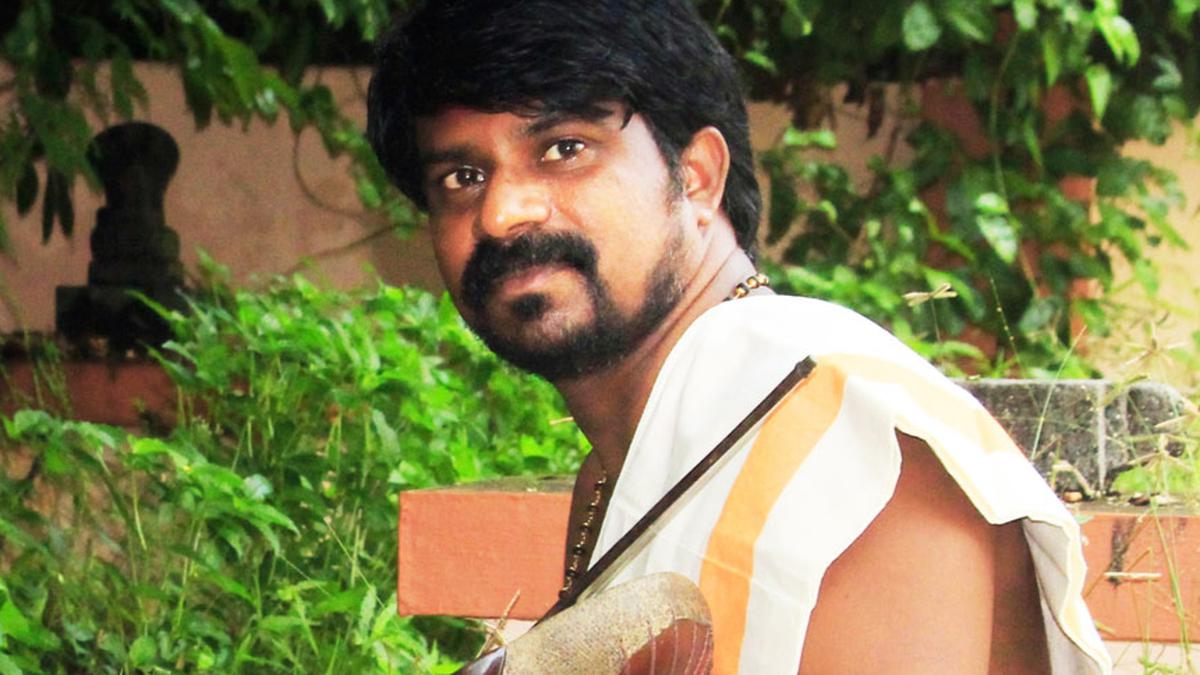
Pulluvanpattu musician Jayakumar Gopinath says he considers it his responsibility to keep his father’s legacy alive
The Hindu
Jayakumar Gopinath talks about Pulluvanpattu, the ritualistic art form of Kerala that sings songs for the snake gods, and how his community is trying to preserve it
“This art is our way of life and our livelihood. At the same time we have adapted it to the changing times,” says Pulluvanpattu musician Jayakumar Gopinath. The ritualistic art form is traditionally performed at a kavu (sacred grove) or in homes and temples where serpents are worshipped, especially near a sarppakkalam or nagakkalam, when pictures of serpents are drawn on the floor using different coloured powders.
At present, as with many ritualistic art forms, it has moved to new performance spaces over the years. The auditorium of Bharatiya Vidya Bhavan Senior Secondary School in Thiruvananthapuram was where Jayakumar performed with his mother, sister and other relatives as part of a festival of dance and drama. organised by Bharatiya Vidya Bhavan and Infosys Foundation.
“At venues like these, we create an atmosphere of the ritual through songs and music. Even though we don’t get to showcase it in totality, we are happy that our art is still treasured by a section of society and that we are given opportunities to perform Pulluvanpaatu when there are umpteen other entertainment options available,” says Jayakumar, who hails from Mavelikkara in Alappuzha district.
The 42-year-old artiste has been carrying forward the legacy of his father, the late K Gopinathan, who, in turn, had learnt it from his forefathers. “Even as a child, I used to accompany achan (father) for programmes. The art has been passed on to us orally, be it the songs or the drawing of the kalam. However, achan and a few of his contemporaries had documented some of the songs to preserve them for posterity. Achan was keen on popularising Pulluvanpattu and had played a big role in democratising it by performing at art and cultural festivals organised by the government and cultural organisations,” says Jayakumar.
It was in the late ‘70s that Gopinathan had started seeking opportunities to take the art to the public, one of them being the tourism week celebrations organised by the government. In 1980, he performed for the first time in VJT Hall (now Ayyankali Hall), thanks to art connoisseur Soorya Krishnamoorthy. “He had been a regular at the annual Soorya festival for many years. He performed across Kerala and in other states and was also part of the cultural programmes conducted as part of the Republic Day parade in New Delhi, a couple of times. I used to accompany him to most of these events and, eventually, I wanted to follow in his footsteps. Although I chose to be his accompanist, he ensured that I came to the forefront,” Jayakumar remembers.
Gopinathan passed away in 2018 before he could publish his book on Pulluvanpattu. Jayakumar took the initiative to publish it. In the book, Adipulluvante Athmayanam , Gopinathan writes at length about the ritual, the songs and his journey as a Pulluvanpattu artiste. “He had a vision and I consider it my responsibility to keep his legacy alive in spite of challenges,” says Jayakumar.
The life of the Pulluva community and their songs are closely linked to the sacred groves, the woods on the premises of ancient houses and temples, with ponds in their vicinity. These groves are believed to be the abode of serpents and, therefore, Pulluvanpattu is predominantly associated with serpent worship, especially sarpolsavam ( festival of the snakes) or sarppamthullal (dance of the snakes), which is conducted to propitiate the serpent gods, especially in homes that had sacred groves.













